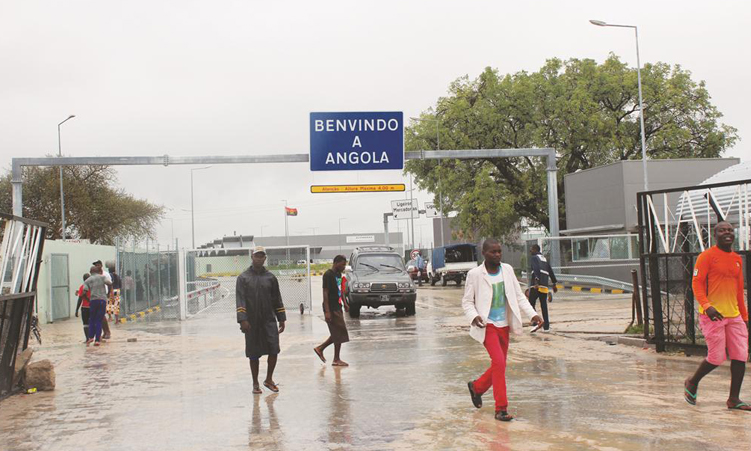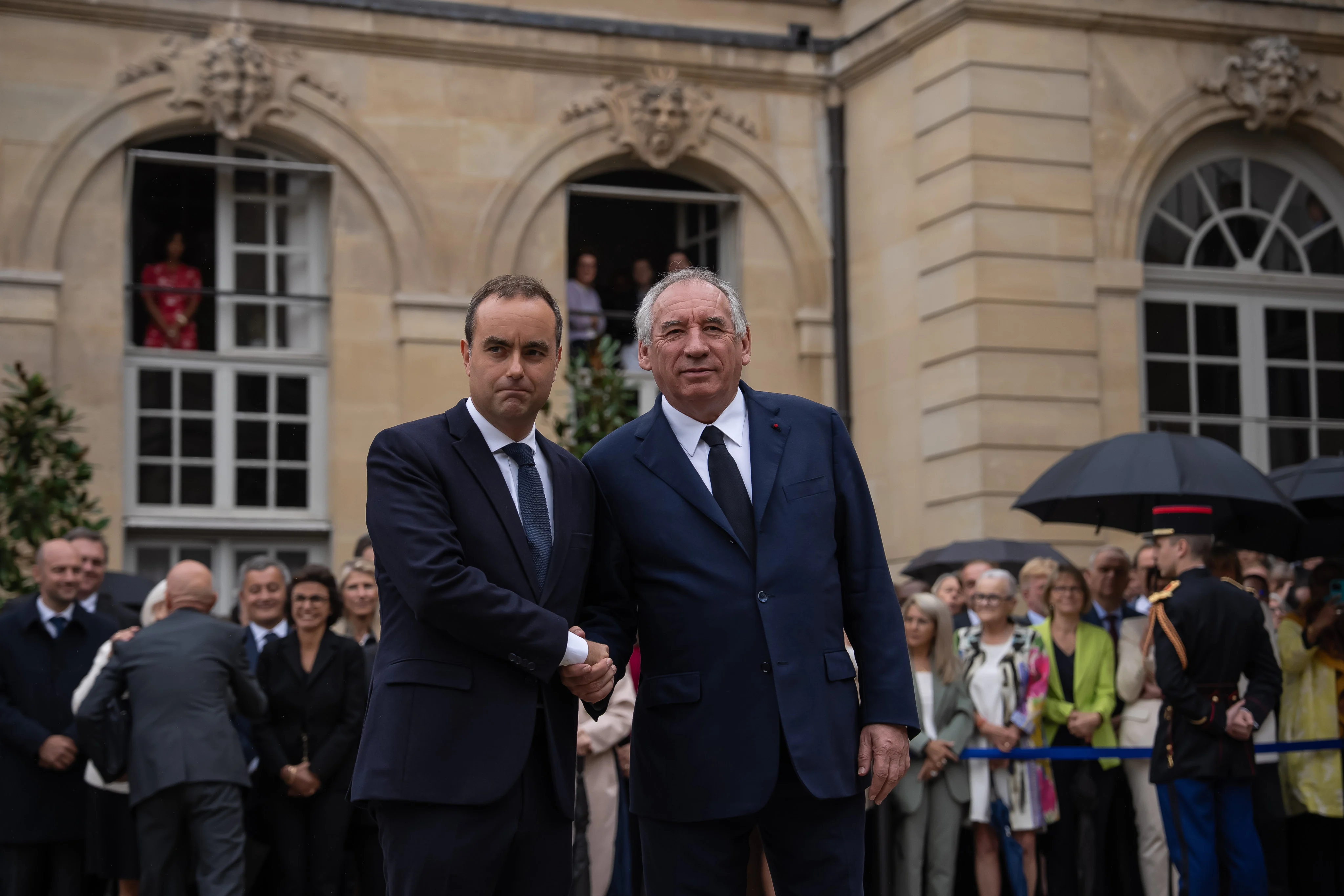By Anna Shinana
Copyright namibian

It is a Monday morning in early August and I am travelling to Oshikango to cross into Angola. I am eager to discover the origins, operations, and successes of the cross-border trading business that has become popular with Namibians.
Arriving at the border town, my passport photos are taken by a local, informal photo vendor whose photo booths are near the Oshikango border control post. These photos are needed for my application for a three-month pass into Angola via the Oshikango-Santa Clara border post.
I walk towards the Namibian immigration cubicle, and greet the official on duty. She politely asks where I am from and where I am headed.
“I am going to Ondjiva just for the day, I am from this region,” I respond.
Namibians often travel to Ondjiva, a provincial Angolan town in Cunene situated 43km from the Santa Clara border. The town has, over the years, become a trading hub for Namibians who buy items here at cheaper prices to re-sell back home.
At around 10h00 I am on the bus to Ondjiva. It is filled to capacity but still stops at villages along the way to pick up more people. Clearly, their load limits are disregarded. Many people are standing or holding on to rails; many others are squashed sharing a seat.
For a Namibian like me, the Portuguese language barrier has made communication challenging. I mutely sit over the dashboard next to the windscreen, looking out the window as I take in the new scenery, landscape, and homesteads filled with vegetable and fruit gardens.
It takes about a half an hour to drive to Ondjiva. The Angolan bus conductor tells passengers in Portuguese to disembark.
Ondjiva is bustling. It has an array of local markets, shops, boutiques, and wholesalers where items such as clothing, electronics, groceries, household goods, cosmetics, and footwear are cheaper when bought in bulk.
This has created a niche business opportunity for many Namibians who, due to unemployment and high costs of living, use this to earn an income.
I follow Namibian women who are going to exchange currencies to a corner by the bus stop at Ondjiva’s bustling marketplace. Young men are seated in an open space, queuing up at this informal bank. The makeshift bankers are carrying stacks of Namibia dollars and Angolan kwanzas.
“This is where you change your money,” a Namibian woman by the name of Esther explains. “If you go deeper into Angola they over-charge for the exchange because it is far from the borders.”
I fully rely on Esther to speak for me and help with the transaction. Being Namibians on foreign ground created an easy bond between us.
I give N$500 from my wallet. I am told quenhentos rand (N$500) is equivalent to 29 million kwanza. I have no idea if this is a lot of money or a fair exchange rate. I do the exchange nonetheless and receive bundles of cash. I am a millionaire.
“A horra pá pagar kinhentos kwanza, A horra pá pagar kinhentos kwanza.”
I watch as passengers hand out notes and realise it’s time to pay the bus fare. I turn to Esther to ask how much it is. She tells me it’s “quenhentos kwanza” which is equivalent to N$10. A 45 km drive for N$10.
Walking through Ondjiva’s market town, traffic picks up. I see motorcycles carrying passengers into and out of town as we approach our destination. Shomokwiyu Flea Market is where everyone is headed. We arrive and disembark. Here, I part ways with Esther and her friends. I follow the trail of people heading to the market and as we enter, I already feel exhausted.
I am at a loss as to where to start my browsing. There is so much to see.
Market vendors shout in Portuguese, trying to get everyone to their stalls. I do not understand what is being said. I go from stall to stall shouts of, “ amiga, amiga” fill the air. I learned from other Namibians that it is Portuguese for ‘friend’, used to attract customers. “How much?” I ask in English?
The amigas reply in Portuguese, but I do not understand. I spot a group of Namibians speaking Oshiwambo looking round other stalls. I approach and greet them, and express my communication challenges.
“I do not understand the prices as it is my first time there.” The group assures me that I will learn fast enough.
“We had to learn like you. The more we came for business, it became easier. We even speak a little Portuguese now,” says one of the Namibians.
I am tired from walking and my eyes are exhausted. The market is overcrowded and activities are plenty because it is vast and there’s much to see. Things appear to move fast. I still have not bought anything, but a few things caught my eye.
The group laughs at me and assures me I will soon get the hang of it. They use the calculators on their phones to show me how to break down the prices based on the current exchange rate.
Two hours later, I have a few items of clothing. I go to a nearby bar called Kapana and Meat, popular with Namibian visitors for its braai meat and endless flow of Cuca beer. I feel more at ease in this place that has some degree of familial comfort.
While eating, I see some Namibians carefully packing away their bought items. I look around and realise many are getting ready to catch the bus back to Namibia. A border runner, Helvi Haufiku, tells me she’s from Walvis Bay and makes trips to Ondjiva twice a month to buy items ordered by customers back at the coastal town.
“I have people who have ordered sport T-shirts – those are very popular with soccer lovers back home. The orders keep coming and I have to make my runs here to get the items. They are cheaper here and the quality is good,” she says, adding she also has orders for shoes. Finding a way back through the border is complicated, she says.
“The Namibia Revenue Agency (Namra) at the borders really makes business hard because they overcharge us to get our items across into Namibia.”
She says as a result, there are Angolan nationals who work to get items across the borders at a fee.
“It is way cheaper than going to the main gate to deal with Namra.”
Another runner has picked up secondhand bales of clothing that she sells at Ondangwa.
“I have people who help me get the items across. I can’t tell you exactly how they do it because it could put my business in jeopardy. This is my income. I am unemployed. This business has been able to feed my children, clothe them, send them to school, and keep a roof over their heads,” she explains.
I continue to watch as many Namibian runners – their name back home – pack items into sealed bags and boxes to hand over to the cross-border transporters.
At around 16h00, my time to depart approaches. I wait at the bus station for my bus to Santa Clara. I hold a plastic bag of my items close to my chest as many passengers squeeze onto the bus.
As we depart, I sit next to two Namibian men who I heard would be crossing back informally to evade Namra tax charges at the main gate. There were other groups of men and women, going through the same route so, I decide to tag along.
We disembark at the bus stop at Santa Clara and immediately hop onto motorbikes heading towards the border fencing where we are to illegally cross back into Namibia.
I see how everyone looks busy. Some Angolan police officers are sitting a few metres from the hole in the fencing. They spot us, and beckon us over. In Oshiwambo, they ask, “Omwetueetela oinima yiwa. Eshi inamuya koshivelo osheshi mwetueetelanoinima yielwa.”
“You brought us gifts. It’s clear that’s the reason you didn’t go to the main gate.”
Growing nervous, I think I am in trouble.
However, as kwanzas are pulled out of pockets and handed over to the officers, I realise this is the tax for safe passage across the border. Once we cross, we encounter a Namibian police officer speaking on his phone, an AK47 slung over his shoulder.
He continues his phone call as though he cannot see us. Again, I am nervous. He shouts: “Go back to the formal border post. There is no passing through here.”
We start walking back to the Angolan officers.
“Well,” one of them says, “there is nothing we can do, as you can see. We had no problems with letting you cross here, but it is your officers who are refusing you.”
As we walk back, a young man calls us from the trees on the Angolan side of the border. Its getting dark.
“Amigas, amigas, come. I know where you can cross. I can take you there – all of you, but you have to pay me,” he says.
We comply and follow him.
An hour later, we arrive at another hole in the border fence. Here, we hand over N$20 each before we part ways with our escort. He bids us farewell. We cross over and briskly head to Oshikango.
It is 20h00 and dark.
We continue walking. It looks like we are not getting anywhere fast. From the nearby bushes, young men carrying containers of fuel emerge, also heading to Oshikango, a recurring scene during the long walk back.
The night has come alive with oil smugglers and informal traders all heading back home.



